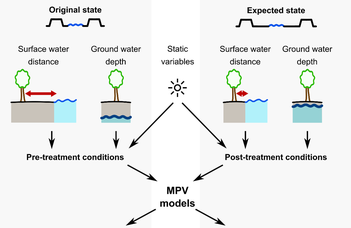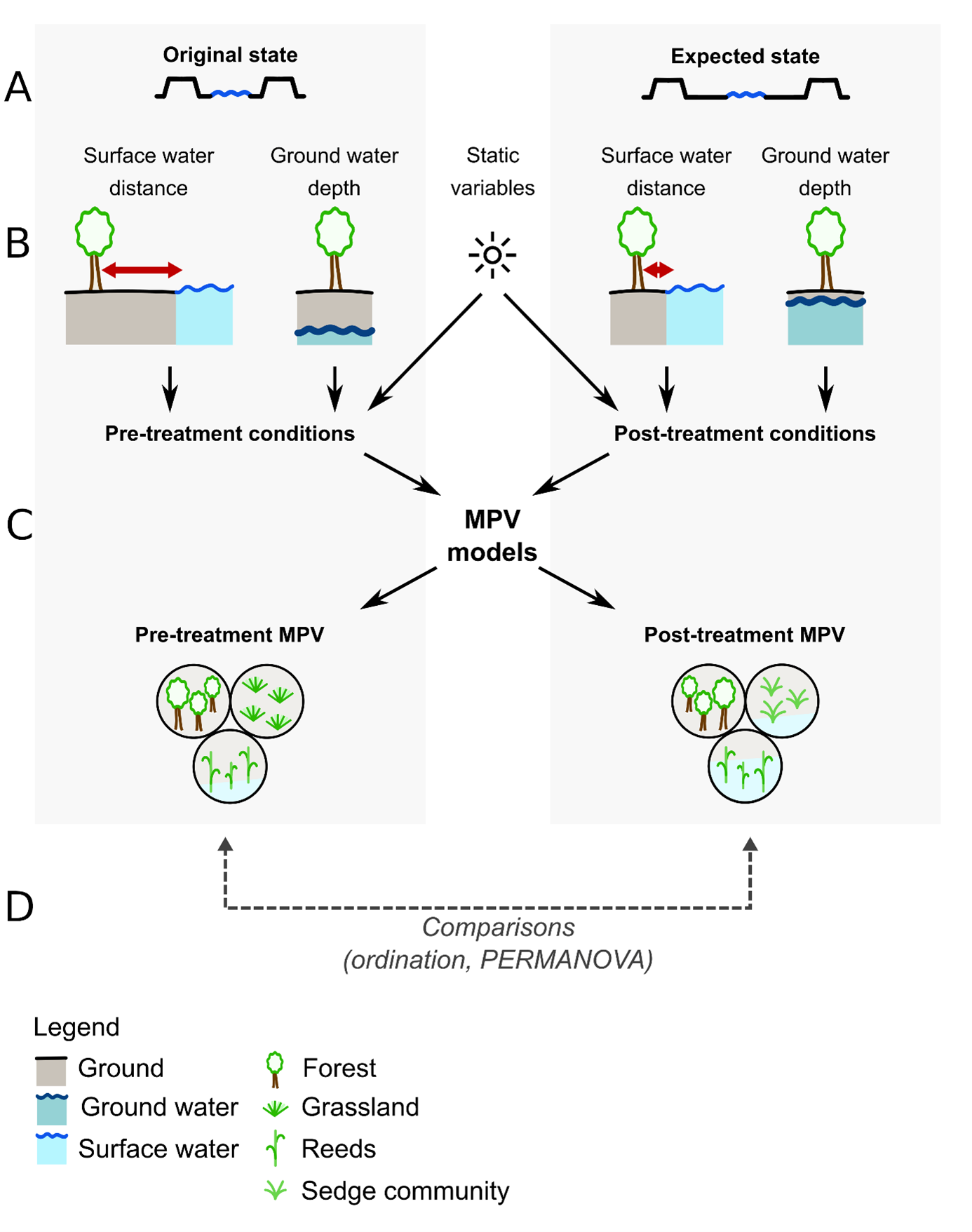River floodplain widening along the Tisza River – new publication

River re-naturalizations are at the forefront of conservation efforts. While hydrological modeling has been a standard procedure in assessing the outcomes of river re-naturalizations, potential vegetation modeling has not always been performed as part of these assessments. Researchers of the HUN-REN Centre for Ecological Research, ELTE, WWF Hungary, Middle Tisza District Water Directorate and Hortobágy National Park Directorate investigated the utility of potential vegetation modeling under river floodplain widening at three study sites along the Tisza River. Ákos Bede-Fazekas, assistant professor of our department was the last author of the paper that was published in the Q1 journal "Global Ecology and Conservation (IF = 4.0)". The potential vegetation modeling, which followed the hydrological and groundwater modelling, revealed that the outcome of river floodplain widening is heterogeneous. While at two of the study sites, prediction typically showed vegetation types requiring wetter and less saline conditions, at one site, the potentiality of saline and non-saline steppe vegetation became more pronounced. The researchers concluded that scenarios employing potential vegetation models help predict river restoration outcomes more accurately and can help identify factors that might otherwise be overlooked.


